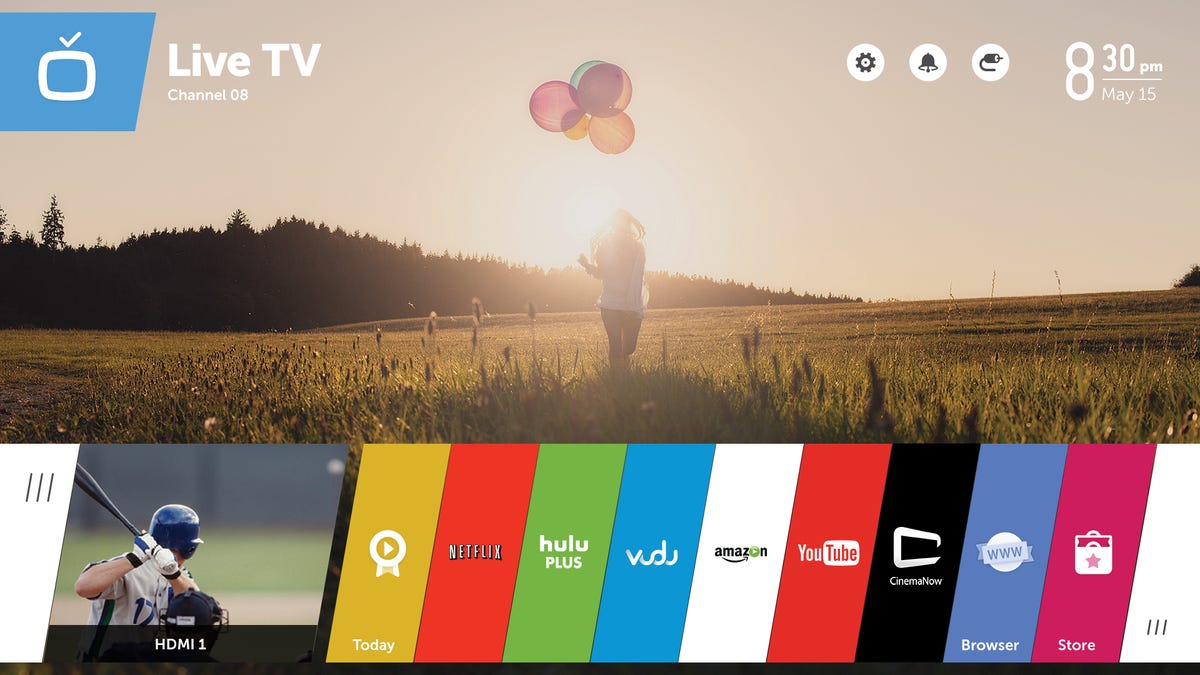WebOS lives on to make LG's smart TVs smarter
With WebOS debuting on LG's televisions, CNET takes a look back at the tortured history of the once promising mobile platform.

LAS VEGAS -- WebOS the smartphone platform is dead; long live LG's WebOS TV.
The operating system made its debut on the television as part of LG's line of smart TVs during the Consumer Electronics Show. Gone, however, are the cards and gesture controls, although the multitasking feature remains. Most importantly, LG will be keeping the WebOS name around and proudly touting it.
It's just the latest -- and hopefully last -- stop for the once beloved platform, which has suffered through a tortured history. For fans of WebOS, LG's move likely provides some element of relief and excitement in the possibility of a smarter smart TV.
It was five years ago at CES when Palm first showed off its Pre smartphone and its WebOS operating system. The operating system, which offered up a multitasking feature based on apps presented as cards that you could switch between or flick up to close, was hailed as the potential savior of the company.
The Pre was nabbed as an exclusive by Sprint Nextel, which was struggling to keep its fleeing subscribers and needed something to excite its customer base.
WebOS certainly got the smartphone enthusiasts riled up, but it did little to make a serious dent in a market dominated by the iPhone. While the Pre was Sprint's fastest-selling phone at the time, the ailing carrier's numbers didn't do much to reverse the downward momentum of Palm. It didn't help that just a few weeks after its June 2009 launch, Apple released the iPhone 3GS.
Even the debut of an upgraded Palm Pre on Verizon Wireless -- and, later, AT&T in 2010 -- didn't help things, as much of the early momentum and buzz around the Pre and WebOS had dissipated. At that point, Palm was in trouble.
Still, there remained diehard fans of the operating system, and there was enough interest that Hewlett-Packard came knocking and ultimately acquired Palm for $1.2 billion in June 2010.
Then-Palm CEO Jon Rubinstein moved over to HP, and the tech company unveiled ambitious plans to place WebOS into multiple devices, running everything from computers to printers. That never happened.
Instead, HP went through its own turmoil, with then-CEO Leo Apotheker looking to sell the consumer electronics business and focus more on business. WebOS and the ambitious plans for the platform were unfortunate victims of the shakeup. The company had only released two smartphones -- including the Pre 3 -- as well as the infamous TouchPad, which only drew the attention of consumers when it was slashed to $99 in a fire sale.
HP ultimately kept its consumer products business, and Apotheker was given the boot. But at that point, WebOS was essentially left for dead. By the end of 2011, HP said it would release WebOS to the open-source community, where some enthusiasts swore it would make its resurgence. (It didn't.)
Last February, LG took a step to revive WebOS's prospects by acquiring it from HP. Instead of phones, LG would use it as the engine to power its televisions. Indeed, much of the team that worked on WebOS phones had long ago left the company.
LG has made WebOS its own, giving it a sharper edge and retooling it for the television screen. But the focus on multitasking is there, which allows for a more intuitive interface than most other current smart TVs. With WebOS, users can navigate directly from app to app, as opposed to returning to the home page to find another program. There's also a Windows 8-like layout of tiles or boxes that's focused on more on media than apps.
Thanks to WebOS, the smart TVs will include viewing history and remember your last watched shows.
Interestingly, the legacy of WebOS can be found in the platforms that ultimately destroyed it. The head of Palm's human interface and user experience, Matias Duarte, ended up at Android, which unsurprisingly has evolved to include those kinds of gesture controls and multitasking functions. Even Apple's latest iOS 7 includes a card-like system of switching between apps, with users swiping up to close programs.
As for WebOS, it does appear to have a permanent home at LG. For such a promising piece of software, it probably deserves more. But at least this way, it gets to stay in the game.

